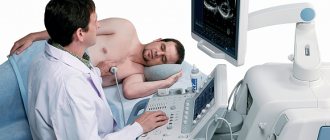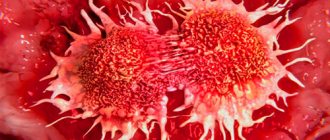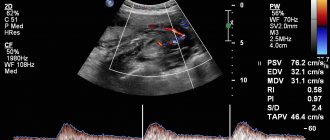Home > Encyclopedia of Oncology > What the tumor marker Ca 15-3 shows: decoding
Both when breast cancer is diagnosed and when this pathology is suspected, identifying the stage of the malignant process and determining the extent of the lesion play a huge role. One of the methods for obtaining reliable information about the patient’s condition is to analyze the mucin-type glycoprotein produced by the tumor. Women who are prescribed this study should know what the Ca 15-3 tumor marker shows in order to:
- realize the advisability of completing the procedure as soon as possible;
- dispel the misconception that elevated readings always indicate the presence of cancer;
- learn the specifics of interpretation and the importance of visiting a high-quality medical center;
- take measures to treat the detected disease without delay.
As with other blood tests, in order for the results and interpretation of the Ca 15-3 tumor marker to be accurate and reliable, the correct sequence of testing, modern equipment and proper preparation of the patient are needed. Israeli doctors, who have achieved enormous success in detecting mutated cells, can make a diagnosis at a very early stage. Thanks to an integrated approach, including laboratory and instrumental examinations, specialists assess the condition of the female body and prescribe appropriate therapy.
What are tumor markers?
Malignant tumors grow rapidly. Their fabric is fragile and easily destroyed. Damage cannot always be immediately determined; sometimes appropriate research is necessary to detect it. In some cases, markers are identified - these are particles of diseased cells that have entered the bloodstream. If the doctor finds these elements, there is a main or subsidiary tumor in the body.
Types of markers:
- CA 15 3 is one of the most important markers. It is part of the cancer cell membrane. It is found in more than half of cases in newly diagnosed patients. It is often found in blood and nipple discharge.
- CEA stands for cancer embryonic antigen. Its detection is an indicator of a malignant tumor in the mammary gland or internal organs.
- CA 199 is a tumor marker that can be elevated in benign tumors. It is present in low concentrations in healthy people. Representatives of the Asian race do not have this species.
- CA 724 - found in cancer patients with damage to glandular tissue. This could be a malignant tumor of the breast, stomach, ovaries, etc.
- Prolactin and estradiol are produced only when the mammary gland is damaged. These are indicators of active growth of compactions. If they are detected, treatment should be started immediately.
The purpose of diagnosis is to detect any of the listed markers. Indicators of a malignant compaction are CA 15 3, prolactin and estradiol. The remaining elements are considered minor, but necessary for the development of a treatment protocol.
Description
CA 15-3 is a two-component protein combined with an amino sugar, which is normally produced by mammary duct cells. In healthy women, this indicator increases during pregnancy; this is a normal reaction to changes in hormonal status. The rate is highest in the third trimester.
The marker is not an absolute indication of cancer. Statistics note that only 10% of women with breast cancer had this indicator elevated at an early stage of the process. The indicator is used to monitor the condition after tumor removal and to track metastases. With metastasis, the rate is increased in 70-80% of women with cancer...
If the diagnosis of breast cancer is confirmed, the level of the marker is monitored over time. An upward trend means that metastasis has begun and the treatment is not giving the desired result. This is important because the rate increases before clinical manifestations begin, and the difference is from 6 to 9 months. Postoperative treatment is always carried out under the control of this indicator in order to detect the onset of the metastatic process in time.
A sharp rise in the tumor marker CA 15-3 in 95% of cases indicates breast carcinoma or a malignant active tumor that requires immediate treatment.
Benign tumors also give an increase in this indicator, but its values are much lower. The indicator may also change in case of severe somatic diseases - viral hepatitis or cirrhosis of the liver, rheumatic diseases, damage to the lungs and kidneys. To distinguish these conditions, carcinoembryonic antigen or CEA is simultaneously determined.
There is a direct relationship between the size and aggressiveness of a breast tumor and a tumor marker - the larger and more active the tumor, the higher the CA 15-3 score.
Pregnancy, childbirth and breastfeeding reduce the risk of breast cancer. During these periods, estrogen levels decrease significantly, which is beneficial for the mammary gland. Abortion, on the contrary, increases the risk of cancer.
This tumor marker is determined in elderly men and adolescents with suspected breast tumors. They can develop cancer if there is a hormonal imbalance.
Sometimes this indicator increases in healthy people for an unknown reason.
Read completely
Tumor-associative antigen CA 15-3 - RUB 1,100.
Urgent analysis - RUB 2,200.
Deadlines
Normal – 1 day.
Urgent – 1.5 – 2 hours.
Taking blood from a vein is paid separately - 300 rubles.
(If several tests are performed simultaneously, the service for collecting biomaterial is paid once)
Indications
- suspicion or presence of a benign or malignant breast tumor;
- monitoring breast cancer treatment;
- control of tumor recurrence;
- suspicion of colorectal cancer or malignant lesions of different parts of the large intestine;
- suspected lung cancer;
- suspected pancreatic and liver cancer;
- suspicion of liver cirrhosis;
- suspicion of tumors of the female genital area - uterus, ovaries, endometrium;
Material for analysis
blood serum
Preparing for the study
Material – blood serum, blood sampling is performed in the morning on an empty stomach after a break in food from 8 to 12 hours. You can only drink clean water.
For women seen by an oncologist or undergoing surgery for breast cancer, the following frequency of testing is optimal:
- monthly during the first year;
- in the second year - once every 2 months;
- in the third year of observation - once a quarter.
This control scheme is developed on the basis of a statically reliable number of observations and allows, with a high probability, to completely control the course of tumors.
In what cases is research necessary?
The examination is usually prescribed not for the initial detection of the disease, but to monitor treatment. The level of the marker determines changes in the tumor during therapy. But sometimes such diagnostics are also indicated for primary pathologies of the mammary glands. These include:
- presence of lumps in the chest;
- change in skin and or nipple color;
- constant pain;
- deformation of the nipple area;
- presence of discharge.
Before testing blood for markers, an instrumental examination (CT, MRI or biopsy) is prescribed. A referral for analysis is issued after cancer is detected.
What tumor markers should women take?
Gynecological cancer kills millions of women every year.
The first symptoms of the disease appear quite early, but women either do not pay attention to them or are embarrassed to see a doctor.
Female tumor markers make it possible to diagnose oncopathology of the female genital organs without additional research methods.
Types of cancer in women
Women have to face cancer of the cervix and uterine body, ovaries and breast.
All women's diseases, which are based on the cancer process, have ten common signs that allow one to suspect oncological pathology in the early stages:
- there is bloody or bloody discharge;
- uterine bleeding (metrorrhagia) appears;
- menstruation becomes painful and irregular (algodysmenorrhea);
- the size of the abdomen changes;
- discharge from the mammary glands begins;
- lumps appear in the mammary glands;
- unmotivated fatigue and increased fatigue appear;
- a woman loses weight;
- bothered by abdominal pain;
- an unexplained fever develops.
Uterine cancer develops due to:
- early onset of sexual activity,
- smoking,
- untreated precancerous diseases, etc.
Women suffer from adenocarcinoma (glandular cancer) of the cervix and cervical canal, as well as squamous cell cancer of the cervix.
Women are rarely diagnosed with uterine sarcoma.
Tumor markers for women are a good help in the early diagnosis of uterine cancer.
Ovarian cancer mainly affects women over fifty years of age.
The peculiarity of this type of cancer is that the first signs of the disease appear when the tumor reaches a large size and puts pressure on surrounding organs.
Women appear
- nagging pain in the lower back,
- severe pain after intercourse and
- signs of anemia.
Determining the level of female tumor markers allows for timely detection of oncological alertness.
The first manifestations of female breast cancer can be detected during examination.
This is a change in the shape of the mammary gland, deformation of the nipple, and the presence of discharge from it.
Changes in the skin in a certain area of the gland (the skin resembles a lemon peel) and the appearance of dense tuberous nodes in the thickness of the mammary gland.
With such symptoms, a woman should immediately consult a doctor and donate blood for tumor markers.
What tumor markers should women take?
The female body produces hormones, the level of which can increase with genital cancer.
In addition, with genital cancer, organ-specific tumor markers appear in a woman’s body, which make it possible to suspect cancer of the uterus or appendages.
If a woman is suspected of having cancer of the internal genital organs, the following tumor markers are determined:
- cancer antigen 125;
- beta human chorionic gonadotropin;
- carcinoma embryonal antigen;
- tumor marker 27-29;
- squamous cell carcinoma marker SCC;
- estradiol
Cancer antigen CA-125
is a glycoprotein that is present in serous membranes and tissues.
The source of CA-125 in women of reproductive age is the endometrium. This is associated with a cyclic change in the concentration of CA-125 in the blood in different phases of the menstrual cycle.
During menstruation, the tumor marker CA-125 is produced in increased quantities.
During pregnancy, the tumor marker CA-125 can be detected in the placenta extract, amniotic fluid (from 16 to 20 weeks) and in the blood serum of the pregnant woman (in the first trimester).
Beta human chorionic gonadotropin
human is produced by the placenta of a pregnant woman. Its β-subunit is of diagnostic value, the concentration of which is used to judge the course of pregnancy. If the level of β-chorionic gonadotropin increases in the blood of a non-pregnant woman, then this clearly indicates a tumor process in her body.
Tumor marker CA 27-29
is the only tumor marker that is considered absolutely organ-specific for the mammary gland.
It is a soluble form of the MUC1 glycoprotein. This glycoprotein is expressed on the cell walls of breast carcinoma. It is produced in excess in endometriosis and female genital cancer.
Tumor marker SCC
is a tumor marker for squamous cell carcinoma. This is a protein that is produced by epithelial cells of the cervix, skin, bronchi, and esophagus.
Estradiol
is a specific marker (estrogen hormone), which is always detected in the blood of both women and men.
The functioning of many organs and systems of the female body depends on its level. Its concentration in the blood increases during pregnancy and many women's diseases. However, a sharp increase in the amount of estradiol may also indicate ovarian cancer.
Indications for testing for tumor markers
Women's health depends on whether it is monitored with cancer cell markers in a timely manner.
Examination of a woman with tumor markers is indicated in the following cases:
- for diagnosing cancer of the genitals and mammary glands;
- for the purpose of screening the radicality of tumor removal during surgery;
- to monitor the effectiveness of ongoing antitumor therapy;
- in order to predict the course of the disease and the likelihood of tumor recurrence.
- in the follicular phase from 68 to 1269 pmol/l;
- the ovulatory peak is in the range of 131-1655 pmol/l;
- in the luteal phase from 91 to 861 pmol/l.
Interpretation of study results for tumor markers and tumor marker norms
Interpretation of the results of analysis for tumor markers should be carried out in the laboratory where the study was performed.
The norm of indicators depends on the analysis technique.
We offer the most accepted interference indicators of tumor marker levels.
Reference values for the tumor marker CA-125 in women in blood serum are up to 35 IU/ml; during pregnancy, its concentration can increase to 100 IU/ml.
The normal hCG level in non-pregnant women is 6.15 mU/L. For non-pregnant women, the free β-subunit of hCG in venous blood is up to 0.013 mIU/ml.
In healthy people, the CEA level rarely exceeds 3 ng/ml, but can sometimes reach 5-10 ng/ml in the case of benign diseases, 7-10 ng/ml in patients suffering from alcoholism and up to 10-20 ng/ml in smokers.
In patients with localized cancer, the concentration of CEA increases in 25% of cases. If women have metastases, the CEA tumor marker will be elevated in 60-80% of cases.
Exorbitant initial concentrations of CEA on the eve of surgical treatment may indicate metastasis of a malignant tumor to regional lymph nodes.
A persistent increase in tumor marker levels indicates that there is no adequate response to therapy.
An increased level of the tumor marker CEA indicates the likelihood of relapse of the disease several months before the appearance of the first clinical signs.
The normal level of breast tumor markers CA 27-29 is less than 38-40 U/ml.
In an adult patient, the concentration of the tumor marker AFP should not exceed 20 ng/ml. Also, a CA level of 27-29 above 10,000 ng/ml may portend an unfavorable outcome of the disease.
The upper limit of normal for the SCC tumor marker (discriminatory level) is 1.5 ng/ml.
The normal concentration of estradiol in a non-pregnant woman is considered to be 40-161 pmol/l.
Its level depends on the phase of the cycle:
In postmenopausal women, estradiol levels should not exceed 73 pmol/l. If this hormone is detected in concentrations exceeding the interference values, one should think about cancer of the female genital organs.
Where can you get tested and how to prepare for them?
Tests for tumor markers can be taken at the Polyclinic of Innovative Technologies LLC.
On the eve of the test, a woman should rest well, stop taking medications and not smoke.
Drinking alcohol is also contraindicated.
You can eat food eight hours before donating blood for testing.
Blood is taken from the cubital vein after the woman has rested for fifteen minutes. It is desirable that she be in a state of complete psychological peace. Analyzes must indicate reference values.
It will also be important for the doctor to know what method was used to conduct the study.
If you are faced with the problem of female cancer pathology, contact your obstetrician-gynecologist immediately.
Diagnosis in the early stages of the disease can be made after determining the level of tumor markers.
Early diagnosis of cancer of the female reproductive system is the key to successful treatment of the disease.
This article is for informational purposes only. An obstetrician-gynecologist at our Polyclinic can tell you in more detail about the prevention of diabetes.
The Polyclinic of Innovative Technologies LLC has developed a special program for the early detection of diseases, including cancer in women
, diagnostics are available to the population of all ages, you MUST undergo it and you will get rid of the “mass” of problems in your body.
In your free time, call him by phone: call center 8 (495) 356 3003.
LLC "Innovative Technologies" thanks you for
that you took the time to read this information.
What are the features of the research procedure?
To donate blood correctly, you must follow several rules that will reduce the likelihood of errors. Primary requirements:
- a short rest before the procedure;
- giving up alcohol, smoking, and taking medications the day before the examination;
- The test should be taken on an empty stomach; only drinking clean boiled water is allowed.
The blood collection procedure is no different from the usual one. The sample is taken from a vein according to standard rules.
How to decipher the results?
It is very important to promptly detect the appropriate markers, which may precede clinical symptoms and deterioration of the patient’s condition by 6 months or more. Several samples are highly informative. One-time violations are not completely reliable.
Having received the test results, the doctor pays attention to the following types of markers:
- CA 15 3 - in a healthy woman the indicator does not exceed 19.9 units.
- Prolactin and estradiol are normally absent. Their detection indicates the presence of a malignant oncological process in the breast.
If other markers are detected, it is recommended to change the diagnostic search, since the cancer may be in other organs. If the above indicators are detected, it is necessary to undergo treatment under the supervision of a doctor.
Indications for analysis
The CA 15-3 cancer antigen test is considered auxiliary among specialists and is prescribed for the following purposes:
- confirmation or refutation of a malignant process in the mammary glands;
- differential diagnosis of benign and malignant tumors, mastopathy, other inflammatory or infectious processes of the mammary glands and internal organs;
- dynamic assessment of the effectiveness of surgical or conservative treatment of confirmed breast cancer;
- assessment of the likelihood of metastasis and relapse;
- making a prognosis for the course of the disease, remission, monitoring the rehabilitation of patients;
- obtaining data regarding the shape and volume of the tumor, its location and extent of spread (the greater the specific gravity of CA 15-3 in the plasma, the greater the volume of malignant cells produced by mammary tissue).
The need to prescribe this test as part of a comprehensive examination of the mammary glands may be indicated by the following clinical signs:
- the appearance of lumps, lumps or other formations in the breast tissue, which is determined visually or during palpation;
- pain in the chest, feeling of fullness or heaviness;
- pathological discharge from the nipples (including in males);
- change in the shape of the nipple (retraction, hardening, redness), the appearance of cracks or wounds on it that may bleed;
- changes in the structure of tissues and skin (redness, generalized swelling, roughness, “lemon peel” effect);
- immobility of the mammary gland (the tumor has grown into the sternum, which leads to deformation of muscle tissue and glands);
- inflammation of regional lymph nodes, their enlargement.
You can read more about breast self-examination techniques for women in our separate article.
The study is also prescribed to patients at risk for oncology:
- the presence of direct relatives who have a history of being diagnosed with cancer of internal organs;
- age over 40-50 years;
- long-term hormonal support, oral contraceptives, hormone replacement therapy;
- chronically elevated levels of estrogen in the blood;
- chronic menstrual irregularities, secondary amenorrhea;
- earlier onset of menstruation;
- late menopause;
- history of ovarian cancer.
Interpretation of the test results for cancer antigen CA 15-3 is carried out by an oncologist, mammologist, surgeon or functional diagnostician.
What are the characteristics of the concentration of CA 15 3 and the expected prognosis?
The tumor marker CA 15 3 can have different meanings in the analysis, but its presence does not always indicate breast cancer. You should pay attention to the concentration:
- Borderline titer - the indicator is 19.9-30 units. This condition may indicate mastopathy. There are seals in the gland that disrupt physiological processes in the body and hormonal levels. Sometimes the value indicates a benign tumor, which requires instrumental examination and biopsy.
- High concentration - from 30 to 50 units. Often observed in malignant processes in the mammary gland. If the disease has already been identified, therapy is adjusted based on these values.
- Very high concentration - more than 50 units. Observed with metastases or severe growth of the tumor. The diagnosis is usually already known, and the patient undergoes intensive therapy.
Sometimes the value increases with cancer of the stomach, liver, bronchi or reproductive system. Therefore, when indicators are higher than normal, an examination is carried out not only of the breast, but also of the body as a whole.
What to do if the indicator is elevated
There are quite a lot of women who have high antigen levels and lumps in their breasts, and all of them are interested in correctly diagnosing their illness and maintaining health. To do this, first of all, you should undergo a comprehensive examination, and, according to reviews on the forums, for girls who have an elevated tumor marker 15-3, it is best to do this in Israel. Here they can count on the professionalism of doctors and the absence of violations of the testing and sample storage procedures. The list of necessary studies includes a biopsy (in the absence of contraindications) and mammography.
If the tumor is not malignant, then you need to undergo regular examinations by an oncologist and mammologist in the future. Then the moment of degeneration of a neoplasm into a malignant one will not be missed. Even with borderline values, one should not forget about visiting specialists, especially if there is an unfavorable family history and other factors contributing to the development of cancer, namely:
- the onset of menopause;
- previously had cancer (it does not matter which organ, although those who have recovered from breast cancer are at greater risk);
- infertility or late birth of the first child;
- early onset of menstruation.
What examination should be performed if markers are detected?
Sometimes women, when borderline tumor marker values are detected, stop being examined, hoping for a benign course of the pathology or its absence, but this is a mistake. Even if you have cancer during this period, there is a high chance of recovery, the main thing is to start treatment on time.
If there are deviations from the norm, it is recommended:
- Visit a mammologist - the doctor will evaluate the test results, advise on lifestyle and prescribe further examination.
- CT or MRI of the breast - these methods show the presence or absence of lumps. If they are detected, the following research method is required.
- A biopsy is the removal of a microscopic piece to determine the type of cells in the lesion. It is carried out at the final stage, after which a final diagnosis is made.
If there are no changes in the breast, an examination of the internal organs is prescribed. First, a survey CT, MRI or ultrasound of the abdominal cavity is done. When a pathological focus is detected, targeted diagnosis is carried out.
What recommendations should be followed if the marker value is elevated?
If during the study a borderline value of CA 15 3 is detected and no pathology is detected, certain rules should be followed that will exclude further development of the disease:
- visit a mammologist twice a year - the doctor will conduct a preventive examination and give recommendations on lifestyle;
- choosing the right bra – it should be loose, products made from synthetic materials are contraindicated;
- special diet - vegetables and fruits should predominate in the diet, fatty, fried and smoked foods should be excluded;
- Excessive physical overload is not allowed - increased activity negatively affects the parenchyma of the mammary gland, sport should be moderate;
- avoiding stress – nervous tension often provokes cancer of the reproductive system. Try not to worry about trifles. If necessary, visit a psychologist.
Bad habits must be avoided - smoking and alcohol are prohibited. An important component of the prevention program is regular sex life with a permanent healthy partner.








